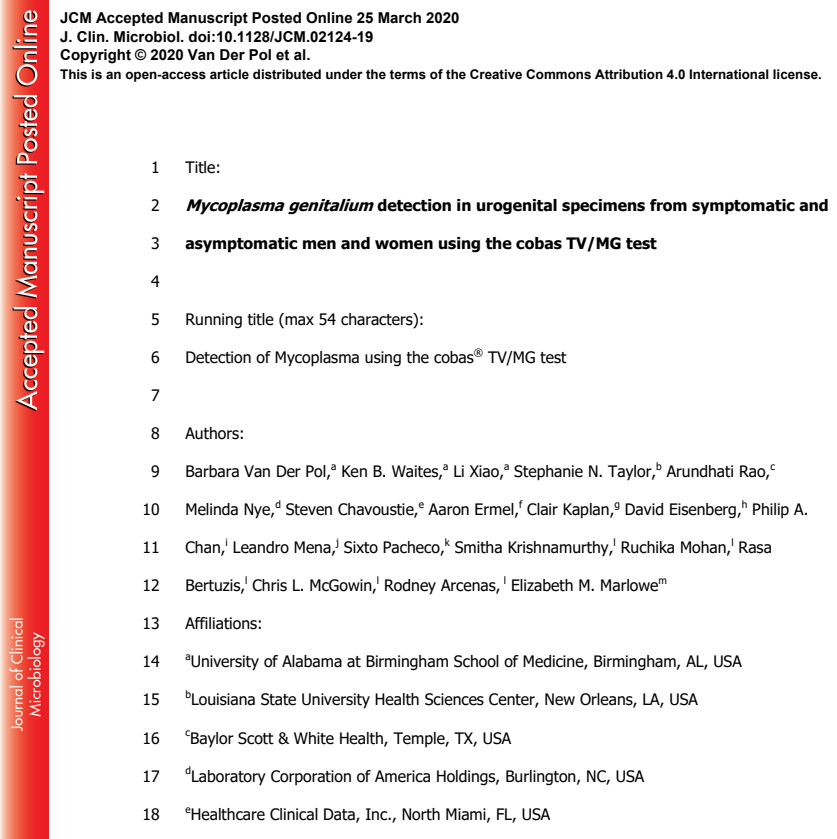
Comparison of the Aptima HBV Quant assay in the automated Panther® System with the Abbott Realtime HBV assay in the quantification of Hepatitis B Virus.
- August 4, 2019
Background: Hepatitis B virus (HBV) is one of the most common infectious diseases affecting more than 350 million people worldwide. HBV is a major cause of chronic liver disease with an increased risk of cirrhosis and hepatocellular carcinoma. Monitoring HBV DNA levels, prior to and during treatment, aids in assessing response to treatment and the emergence of resistance. Nowadays there are multiple assays and platforms available to detect and quantify HBV. The objective of this study was to compare the Aptima HBV Quant Assay, released by Hologic, Inc®, with the Abbott Molecular Realtime HBV assay. The Aptima HBV Quant assay is an in vitro dual-target nucleic acid amplification test for the quantitation of HBV DNA in human plasma and serum on the PantherTM System. The Abbott Realtime HBV assay is an RT-PCR test run on the Abbott m2000 System.
Methods: To evaluate sensitivity and specificity performance of the Aptima HBV Quant Assay, results from one hundred twenty-nine plasma specimens, previously tested on the Abbott m2000 platform, were compared. In addition, to corroborate specificity, some of the HBV negative specimens used were positive for Human Immunodeficiency Virus, Hepatitis C Virus, Hepatitis A Virus and Toxoplasma gondii. One hundred and ten specimens, with known viral loads, were used to test the quantitative performance. Precision was tested using an HBV positive specimen repeated fifteen times in different runs. The specimens were assayed using the Aptima HBV Quant Assay on the Panther System following the manufacturer’s instructions. Results obtained were compared using the EP Evaluator program.
Results: HBV Viral Loads were analyzed through both methods to determine whether the methods were equivalent within the allowable total error of 1 log10 IU/mL. One hundred and ten positive specimens were compared over a range of 1.00 to 9.00 log10 IU/ml, the test passed with a correlation of 0.98. The difference between the methods was within allowable error for 105 of the 110 specimens (95.5%) tested. For the qualitative performance, results showed a positive agreement of 98.2% and a negative agreement of 100%. Two out of 112 specimens showed not detected results on the Panther System. Both samples had detectable, but not quantifiable viral loads (<10 IU/mL) on the Abbott m2000 System. This can be explained because 10 IU/mL is within the allowable error at low viral load ranges for the Panther system. Specificity of the Aptima HBV Quant assay showed a not detected result for all specimens, which represents a 100% agreement. For the precision study the EP Evaluator results showed a mean of 6.126 log10 IU/mL with a standard deviation of 0.051. These results were within 2 SD ranges.
Conclusions: The Aptima HBV Quant assay demonstrated high efficiency, accuracy and reproducibility for the detection and quantification of HBV, with a performance equal to that of the Abbott Realtime HBV assay. The random access to the Panther system along with the full automation, the ease of use, and the reduction in hands-on time, makes the Aptima HBV Quant assay a good option to detect and quantify HBV.
DOWNLOAD PDF